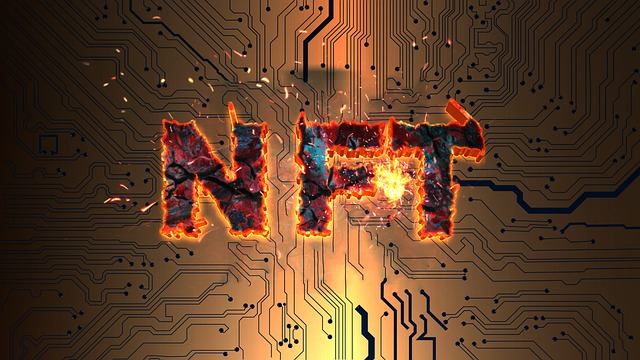
NFts are a popular way for collectors and investors to easily create and manage their digital assets. NFTs provide greater accessibility and transparency that have completely revamped the digital world of art and collectibles. However, as the popularity of NFTs increases, many reports raised some serious concerns about the sustainability of NFTs given the massive impact NFTs projects may have on the environment.
What’s alarming is that many industry experts do accepts that the concerns are legitimate as NFT transactions on the Ethereum blockchain alone can contribute to 238 kWh of energy use and to mint your own NFT project would cost roughly 142 kWh or enough to run your standard refrigerator for over 142 days!
While such figures are mind-boggling, they do not provide the entire picture of the true magnitude of the impact of NFTs. So, in this article, we explore the underlying technology behind NFTs and try to find out whether NFTs can ever be sustainable in the future.
How NFTs Impact the Environment
It is important to understand that NFT itself does not directly impact the environment. It is the process of minting the NFT project that is primarily responsible for consuming power. Here’s a look at how much energy is consumed in creating a popular NFT project.
Minting
Minting is a process of creating new NFTs which is similar in process of creating new coins in traditional currency, but with NFTs, the process is entirely digital. Each NFT project is minted on a blockchain (most prefer Ethereum) and the way blockchain works requires large computers to perform complex algorithms around the clock which contributes to the insane dependence on energy that is required.
Listing your NFT project
While minting an NFT project uses the most energy, listing your NFT project may also contribute to the overall energy consumption. An NFT has to be listed on a website that again runs several powerful computers and databases to operate. Although the energy consumption in listening to an NFT project is still significantly lower, we must take this into account when scaling the overall NFT system.
E-waste
Another environmental concern associated with NFTs is e-waste. In our NFT guide, we mentioned how NFTs are stored on servers, which require physical hardware to operate. When this hardware becomes outdated, it can no longer be used which may lead to e-waste producing harmful substances.
Why do NFTs require so much energy?
NFTs are built on blockchain, a revolutionary new technology that is completely decentralized, meaning there is no intermediary body supervising each transaction. However, to ensure that no one is taking advantage of the system and making the same transaction multiple times, blockchain uses the proof-of-work (PoW) consensus, where miners are required to compete against each other to solve complex cryptographic problems to validate the transaction. The first miner to validate a block is rewarded, and the block is added to the network.
This makes NFTs traceable, meaning you can go back and validate every transaction made on the blockchain network. Blockchain technology is also secured as there is no way for hackers to manipulate the inner workings of the token.
However, this process of mining Blockchain requires huge computational power, and because of this, in 2021, Ethereum was responsible for using more than 112 TWh of electricity which is 1/5th of Germany’s total power consumption and this is exactly why NFTs require so much energy.
How can NFTs use less energy?
Using a more efficient proof-of-stake (PoS) consensus
The most popular NFT projects have identified the issues and are hard at work on creating a new consensus that would be much faster and requires significantly less energy. A new protocol was therefore introduced called proof-of-stake (PoS), which would use validators instead of a miner to authenticate transactions. Proof-of-stake (PoS), in theory, would use 99.95% less energy and yet provide the same security features we know and love about the previous PoW protocol. So finally on 6 September 2022 Ethereum made the switch of its first phase which in theory would significantly decrease the energy use of NFT projects.
Now that Ethereum 2.0 is finally here, developers and miners must adapt to the new consensus and make necessary changes to their existing system. The Ethereum merge will also significantly reduce the maintenance cost for NFT projects, so we expect to see a much wider adaptation of NFTs and lower gas fees. Analysts also predict a speedy surge for Ethereum as minting and maintaining NFTs become much easier.
Using energy from sustainable sources
Many blockchain networks, such as Ethereum, are already transitioning to more sustainable energy sources, such as renewable energy. It requires an upfront investment, but in the long run, the cheap and sustainable green energy source might be the answer for sustaining the development of NFT projects.
Using alternative blockchains
Blockchains like Solana and Cardano are popular alternatives that can be used to mint popular NFT projects. These blockchains run faster and have significantly low maintenance and short transaction time.
Conclusion
The popularity of NFTs has revolutionized the world of art and collectibles, enabling a sense of transparency and stability in the industry. However, the true sustainability and growth of NFTs can only be ensured if the environmental impact of NFTs can be correctly addressed. We live in a world where energy is scarce, so it is important to understand the limitations and adopt a system that is both efficient and sustainable in the long run.
The recent move to a more efficient PoS (proof_of_stake) consensus seems to be a move in the right direction. However, it will take time and effort on the part of the developers to port their existing NFTs to the new chain.
The use of renewable energy is also showing hopes for a better and brighter future. But we must keep this positive trend going and make sure that we work towards a world where all our energy demands are addressed with clean renewable energy. Only then can we harness the true potential of NFTs or blockchain technology as a whole.


